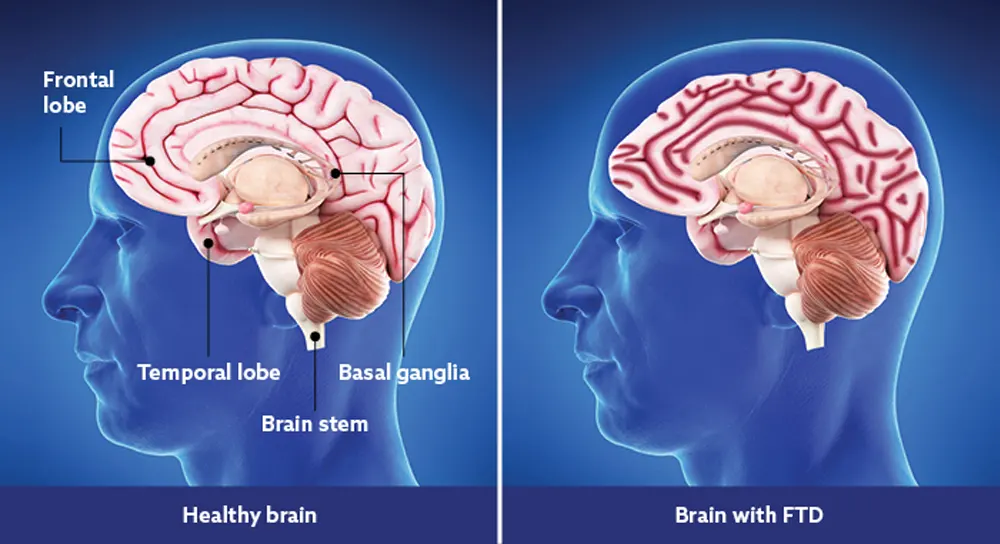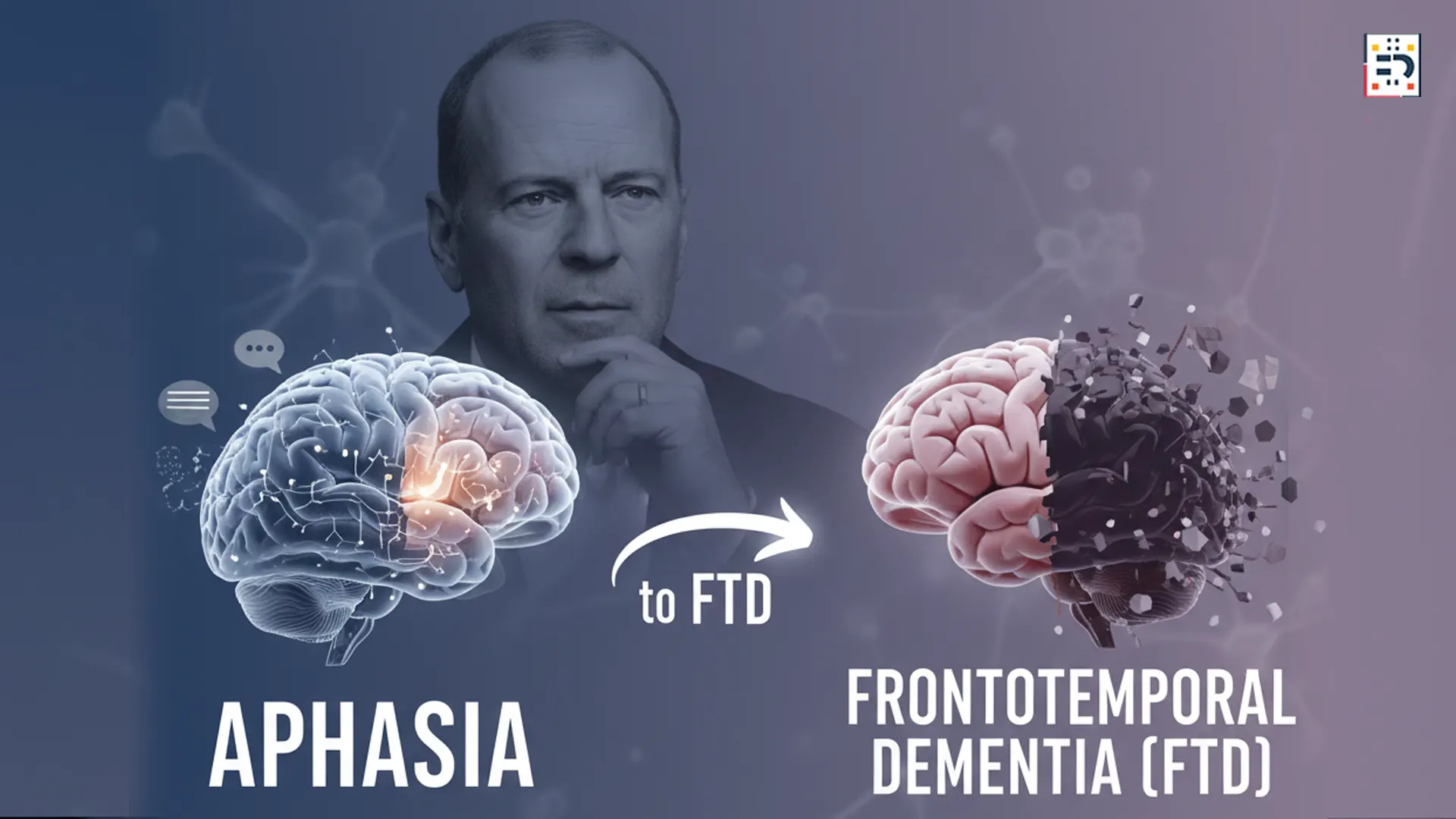When the Willis family announced in 2022 that Bruce Willis was stepping away from acting due to aphasia, many Americans were shocked. One year later, the family clarified that the aphasia was actually an early symptom of frontotemporal dementia (FTD) — a progressive brain disease that is one of the most common dementias in people under 60 in the United States.
As searches like “Bruce Willis FTD diagnosis explained”, “What is frontotemporal dementia vs aphasia?”, and “Bruce Willis aphasia 2022 to dementia 2023” surged across the US, the public began asking: How are aphasia and FTD related? What changed in his diagnosis? And what does this mean for his care and prognosis?
Below is the complete breakdown of Bruce Willis’ evolving diagnosis — fully optimized for clarity, accuracy, and SEO ranking in the U.S. region.
What Aphasia Is — and Why It Was Bruce Willis’ First Known Symptom
Aphasia is a communication disorder, not a standalone disease. It affects speaking, reading, writing, and understanding language. Medical experts from the Mayo Clinic note that aphasia often results from a stroke or brain injury but can also be caused by progressive neurological conditions.
When Bruce Willis’ family shared the initial diagnosis, signs included:
- Word-finding difficulty
- Trouble processing language
- Inability to communicate consistently
- Problems reading or writing
These early symptoms led many to believe his issue was isolated to speech. But aphasia can also be the earliest sign of a type of dementia — particularly Primary Progressive Aphasia (PPA), a subtype of FTD explained by Northwestern Medicine.
This helps explain why Willis’ initial diagnosis later evolved.
What Frontotemporal Dementia (FTD) Is — The Diagnosis Behind the Headlines

By February 2023, Willis’ family announced that he had been diagnosed with frontotemporal dementia, a brain disorder that causes degeneration in the frontal and temporal lobes. According to the Association for Frontotemporal Degeneration, FTD affects:
- Behavior
- Personality
- Decision-making
- Emotional regulation
- Language abilities
Unlike Alzheimer’s disease — which starts with memory loss — FTD often begins with language decline, which directly connects to the aphasia Bruce first experienced.
The Alzheimer’s Association notes that FTD often strikes younger adults and progresses faster than more common dementias, with no cure currently available.
How Aphasia and FTD Connect in Bruce Willis’ Case
One of the most common Google searches is:
“Does aphasia turn into frontotemporal dementia?”
The answer:
- Aphasia does NOT turn into dementia
- But aphasia CAN be an early sign of FTD, especially the language variant
- As the disease progresses, communication, behavior, and cognition decline
This is consistent with Primary Progressive Aphasia (PPA), an early manifestation of FTD, described by Northwestern Medicine.
Bruce Willis’ journey illustrates this pattern exactly.

Bruce Willis’ Diagnosis Timeline
March 2022 — Aphasia Diagnosis
News outlets like CNN covered the family’s announcement that Willis would retire from acting due to aphasia. Fans believed the condition was primarily speech-related.
February 2023 — Frontotemporal Dementia Confirmed
The family issued a new statement explaining that the aphasia was part of a larger degenerative condition: FTD. Coverage from BBC News emphasized how cruel and misunderstood FTD is.
2024–2025 — Family Shares Emotional Updates
U.S. outlets continue reporting on the family’s caregiving journey:
- Emma Heming Willis shared emotional holiday reflections via People Magazine
- Rumer Willis described “brief sparks” of recognition from her father in an interview with Entertainment Weekly
These moments offer hope but also highlight the challenges of managing progressive dementia.
How Doctors Decoded the Change From Aphasia to FTD
Diagnosing FTD is notoriously challenging. According to Johns Hopkins Medicine, diagnosis typically requires:
- Neurological exams
- Neuropsychological testing
- MRI or PET scans to identify frontal/temporal lobe degeneration
- Monitoring symptom progression over time
- Excluding other causes such as stroke or infections
This long-term observation is why Willis’ diagnosis changed from aphasia (a symptom) to FTD (a progressive neurodegenerative disease).
Impact on Caregiving, Family Life, and Dementia Awareness in the U.S.
Bruce Willis’ condition has brought unprecedented attention to dementia caregiving in the USA, as families nationwide search for support resources. The National Institute on Aging offers guidance for caregivers facing FTD or aphasia.

Willis’ wife Emma Heming Willis has become a public advocate for:
- Understanding FTD
- Supporting dementia caregivers
- Reducing stigma
- Promoting early detection
Her transparency is helping millions of Americans better understand the realities of frontotemporal degeneration.
Why Bruce Willis’ Story Matters
Bruce Willis’ transition from aphasia to frontotemporal dementia has:
- Increased U.S. awareness of FTD
- Encouraged early evaluation for language or behavior changes
- Highlighted the emotional toll of caregiving
- Sparked national conversations about dementia support and research
- Helped families differentiate Alzheimer’s vs. FTD vs. aphasia
This is more than a Hollywood story — it’s a public health turning point.
Bruce Willis’ evolving diagnosis — from aphasia to FTD — shows how language changes can signal a deeper neurological condition. His family’s openness has educated millions of Americans on dementia, caregiving, and the importance of early intervention.
And as FTD continues to gain awareness in the United States, Willis’ story remains a powerful reminder of the importance of compassion, public education, and scientific progress.
#BruceWillis #FTD #Aphasia #FrontotemporalDementia #DementiaAwareness #BruceWillisNews #Caregiving #BrainHealth #Neurology #USANews


